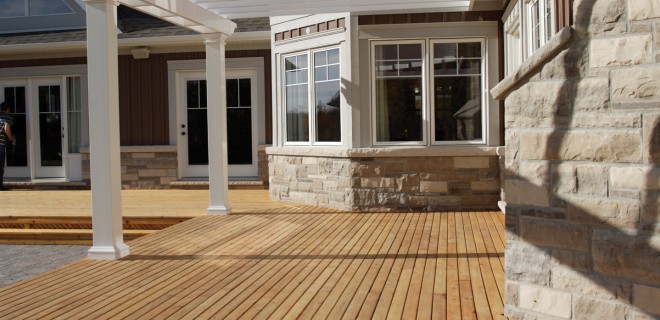As soon as the weather breaks, decks are a great hangout spot. Whether you’re enjoying a meal al fresco or just sitting outside reading a book, decks are a spring and summertime Mecca. Because decks are such a popular gathering spot, you want yours to look its best. Most of the time, a good power washing or re-staining will do the job, but sometimes these projects can run you ragged. Here are some ways you can avoid said problems while you’re sprucing up your deck this summer:
- Weather. Before you even begin to spruce up your deck, you want to make sure the temperature is between 60-80 degrees. In order for the stain to not absorb or dry too quickly, this is the perfect range of temperature. You also want to check the humidity and the wind factor for the day. Humidity can prolong the stains drying period, leaving more time for dirt and debris flying around to get stuck in the stain.
- Moisture. Before constructing a deck, make sure the wood is properly weathered. The dryer the wood, the more absorbent it is, which is better for staining. When the stain can be absorbed properly, it will last longer and be less likely to peel. Note that you don’t want to power wash and stain the deck at the same time. Make sure you leave enough time in between the washing and staining for the wood to dry out. A week or two should suffice.
- Over-application. Less is more when it comes to applying the stain on your deck. Initially, over-applying can make the wood look nice, but this will be short lived. The more layers of stain on the wood, the more likely peeling will occur. If you are having trouble deciding what type of stain you should use, a semitransparent stain is always a safe choice. Also, you should always use a brush when staining. It will work the stain into the wood the best. Aim to work on 2-3 boards at a time so you can apply proper coverage without stopping.
- Under-preparation. If you take shortcuts when preparing wood to be stained, you will pay for it in the long run. Make sure it is properly sanded so it will be ready to thoroughly absorb the stain. In addition to sanding, clean and brighten the wood before you stain it. The more porous the wood is, the more stain it will soak up. Working with wood that isn’t prepped correctly or wood that has a high level of moisture will only cause your deck to deteriorate quicker than it should.
If you’ve had the same deck for awhile, years of wear and tear can add up. Following these tips and tricks, brought to you by CertaPro Painters of Virginia Beach, to help prolong the life of your deck.





